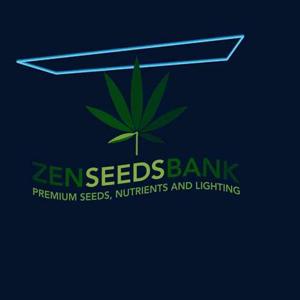
Cannabis cultivation is a meticulous art that requires careful attention to various factors, with light being one of the most critical. From the moment a cannabis seed germinates to its early stages of growth as a sapling, the role of light is paramount in shaping its development.
In this article, we delve into the importance of light in cannabis seedling development, exploring how factors such as intensity, spectrum, and duration influence the growth process.
The Importance of Light Intensity
Light intensity plays a crucial role in cannabis seedling development. During the initial stages of growth, seedlings are particularly sensitive to light levels. Insufficient light can lead to elongated stems and weak growth, a condition known as etiolation. On the other hand, excessive light intensity can cause stress and leaf damage.
To ensure optimal growth, it's essential to provide seedlings with the right balance of light intensity. Typically, seedlings require lower light intensity compared to mature plants. Providing gentle, diffused light helps prevent stress while promoting healthy growth. Growers often achieve this by using fluorescent or LED lights placed at an appropriate distance from the seedlings to avoid excessive exposure.
Understanding Light Spectrum
In addition to intensity, the spectrum of light significantly influences cannabis seedling development. Different wavelengths of light impact various aspects of plant growth, including photosynthesis, stem elongation, and nutrient uptake. For seedlings, blue light is particularly crucial as it stimulates compact, sturdy growth by inhibiting elongation. Understanding the role of specific light wavelengths is essential for optimizing cannabis seedling light conditions and promoting healthy growth.
During the seedling stage, growers often utilize light sources with a higher proportion of blue light to mimic natural sunlight. LED grow lights with adjustable spectra allow growers to tailor the light spectrum to the specific needs of seedlings. By providing the right balance of blue light, growers can encourage robust seedling development and prepare them for successful transplantation.
Duration of Light Exposure
The duration of light exposure, or photoperiod, also influences cannabis seedling development. Unlike mature plants that require distinct periods of light and darkness for flowering, seedlings benefit from continuous light during their early stages. Continuous light promotes photosynthesis and prevents stretching, ensuring sturdy, compact growth. Understanding the optimal photoperiod for cannabis seedling development is essential for maximizing the benefits of cannabis grow lights and fostering healthy growth.
While providing continuous light is beneficial for seedling growth, it's essential to strike a balance to avoid stress. Some growers opt for a light cycle of 18-24 hours of light per day during the seedling stage. This extended photoperiod maximizes growth potential without inducing stress. As seedlings mature and transition to the vegetative stage, growers gradually adjust the light cycle to simulate natural daylight patterns.
Conclusion
In the journey from seed to sapling, light serves as a guiding force, shaping the development of cannabis seedlings. By understanding the importance of light intensity, spectrum, and duration, growers can create optimal growing conditions for healthy seedling growth.
Providing gentle yet sufficient light, tailored spectra, and appropriate photoperiods are key considerations in nurturing robust cannabis seedlings. With careful attention to these factors, growers can set the stage for successful cultivation and ultimately, a bountiful harvest.



Write a comment ...